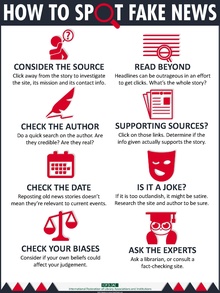President Donald Trump keeps pumping out the insults, and Rep. Alexandria Ocasio-Cortez (D-N.Y.) just keeps knocking them right back at him.
At a campaign rally Monday in Lititz, Pennsylvania, the president tossed out some of his go-to attacks against the progressive lawmaker and her proposals to combat climate change.
“A great student of the environment — I don’t think she ever took an environmental course in college,” he said. “She did go to college, right?”
Ocasio-Cortez, who graduated from Boston University with degrees in economics and international relations, argued that plenty of people without a college education could run the country better than Trump has. She slammed him and his fellow Republicans for their elitist attitude toward people without degrees, such as food service workers, calling it “classist & disgusting.”
She also pointed out that as college tuition continues to rise, degrees begin to measure privilege more than competence.***************************************************************
This week we are focusing in on fake news, before actually looking at techniques and parts of an actual news story. This will culminate in your own news story.
This is week seven of the first quarter. The district is planning on a writing assessment for middle and high school students the last week of the quarter, which ends November 13. That means, if you are missing any work, you need to very quickly send it along. Do you need assistance? I post the office hours' link 9:30 to 10:30 and 1:30 to 2:30 on Wednesdays. As well, I have been holding office hours on Sunday. Time's a tickin'

What is "Fake News"?
“Fake news” is a term that has come to mean different things to different people. At its core, we are defining “fake news” as those news stories that are false: the story itself is fabricated, with no verifiable facts, sources or quotes. Sometimes these stories may be propaganda that is intentionally designed to mislead the reader, or may be designed as “clickbait” written for economic incentives (the writer profits on the number of people who click on the story). In recent years, fake news stories have proliferated via social media, in part because they are so easily and quickly shared online.
Misinformation and Disinformation (other types of "fake news")
The universe of “fake news” is much larger than simply false news stories. Some stories may have a nugget of truth, but lack any contextualizing details. They may not include any verifiable facts or sources. Some stories may include basic verifiable facts, but are written using language that is deliberately inflammatory, leaves out pertinent details or only presents one viewpoint. "Fake news" exists within a larger ecosystem of mis- and disinformation.
Misinformation is false or inaccurate information that is mistakenly or inadvertently created or spread; the intent is not to deceive. Disinformation is false information that is deliberately created and spread "in order to influence public opinion or obscure the truth" (https://www.merriam-webster.com/dictionary/disinformation).
Where does it come from?
How misinformation and disinformation is produced is directly related to who the author(s) is and the different reasons why it is created.
Who are the authors? They may be:
- Someone wanting to make money, regardless of the content of the article (for example, Macedonian teenagers)
- Satirists who want to either make a point or entertain you, or both
- Poor or untrained journalists - the pressure of the 24 hour news cycle as well as the explosion of news sites may contribute to shoddy writing that doesn't follow professional journalistic standards or ethics
- Partisans who want to influence political beliefs and policy makers
The technological ease of copying, pasting, clicking and sharing content online has helped these types of articles to proliferate. In some cases, the articles are designed to provoke an emotional response and placed on certain sites ("seeded") in order to entice readers into sharing them widely. In other cases, "fake news" articles may be generated and disseminated by "bots" - computer algorithms that are designed to act like people sharing information, but can do so quickly and automatically.





No comments:
Post a Comment